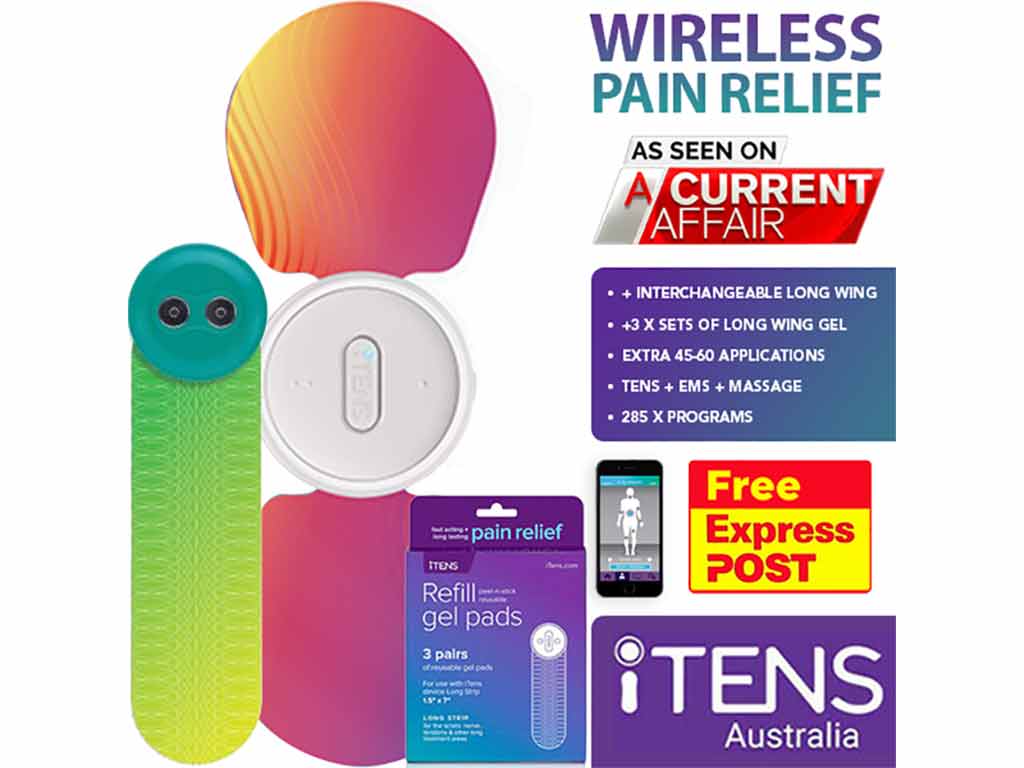
The vagal nerve is the tenth cranial nerve (or cranial nerve X), and it is one of the most complex nerves in the human body. It plays a critical role in regulating various bodily functions, including digestion, heart rate, and mood. Therefore, nerve damage can have significant effects on the overall health and well-being of a person. Fortunately, there are several options for treatments, such as electrical stimulation. It uses a device to improve the nerve functions.
Many of the involuntary functions of the body are controlled by the vagus nerve. While many people may not be familiar with it, its importance cannot be overstated. Understanding its functions can gain valuable insights into determining suitable approaches to dealing with certain health conditions. This guide will delve into the functions of the vagus nerve, conditions that can affect it, and treatment options.
Jump to a Section:
- What Is the Vagal Nerve?
- Anatomy of the Vagal Nerve
- Conditions and Disorders Affecting the Vagal Nerves
- Common Treatments for Vagal Nerve Disorders
- Vagal Nerve Stimulation
- Benefits of Stimulating the Vagal Nerves
- Types of Vagal Nerve Stimulation Devices
- Vagal Nerve Stimulation Procedure
- Recovery After the Vagal Nerve Stimulation Procedure
- Possible Risks and Side Effects of Vagal Nerve Stimulation
What Is the Vagal Nerve?
The vagal nerve is a complex network of nerve fibres that runs from the brainstem and extends down into the abdomen. It is part of the autonomic nervous system, which controls many involuntary functions. Moreover, it has several branches that innervate different organs and systems in the body, including the heart, lungs, stomach, and intestines.
Additionally, the vagus nerve acts as the communication highway between the brain and organs, transmitting signals in both directions. For example, when a person eats, this nerve signals the brain to initiate the digestion process. It also relays information back to the brain about the level of fullness in the stomach.
Beyond its role in regulating basic body functions, the vagus nerve plays a significant part in other processes, such as controlling inflammation, stress response, and mood. Furthermore, stimulating this nerve can have therapeutic effects on certain medical conditions, such as epilepsy, depression, and inflammatory diseases. Overall, it is a vital component of the nervous system and for maintaining health and well-being.
Function in Human Physiology
- The vagus nerve regulates the parasympathetic nervous system, which controls rest and digestion.
- It plays a role in cardiac regulation. It helps to slow down the heart rate and lower blood pressure.
- It is responsible for transmitting sensory information from various organs to the brain, including touch, taste, and temperature sensations.
- The vagus nerve is involved in the regulation of gastrointestinal functions, such as stimulating the production of digestive enzymes and promoting intestinal contractions.
- It plays a role in controlling inflammation and immune responses in the body. Activation of the vagus nerve can help reduce swelling and promote healing.

Anatomy of the Vagal Nerve
The vagal nerve has two main branches, the left and right sides, which have different functions. Initially, the vagus nerve originates in the medulla oblongata, the part of the brainstem located at the base of the skull. It then extends down through the neck, between the carotid artery and the internal jugular vein inside the carotid sheath. Subsequently, it branches out to the heart, lungs, gastrointestinal tract, and vocal cords.
The left vagus nerve primarily innervates the organs of the thoracic cavity, including the stomach and intestines. It has branches that go to the chest region, break up into the pulmonary plexus, and continue into the esophageal plexus. It then enters the abdomen as the anterior vagal trunk through the diaphragm.
Meanwhile, the right vagus nerve stimulates the organs of the abdominal cavity, including the stomach and intestines. In addition, it gives rise to the right recurrent laryngeal nerve and ascends into the neck. It then enters the diaphragm through the esophageal hiatus.
Branches
The right and left vagus nerves join to form the vagal trunk that goes to the abdomen. It has several branches, including the main cardiac and pulmonary branches. The cardiac branches regulate heart rate and rhythm. It sends signals to the heart, influencing its beats per minute.
The pulmonary branch is another significant branch that has a role in the respiratory system. It innervates the lungs and is responsible for controlling the rate and depth of breathing. Through its connections with the lung tissue, the nerve ensures the proper intake of oxygen and the removal of carbon dioxide from the body.

Conditions and Disorders Affecting the Vagal Nerves
Several conditions can affect the vagal nerves, which results in a range of symptoms and complications. One condition is Gastroesophageal Reflux Disease (GERD). It occurs when the stomach acid flows back into the esophagus, causing irritation and inflammation. This can lead to heartburn, regurgitation, and difficulty swallowing. Additionally, acid reflux can irritate the vagus nerve, leading to hoarseness, chronic cough, and the sensation of a lump in the throat.
Diabetes is a metabolic disorder characterised by high blood sugar levels. Over time, this can damage the nerves, leading to a condition called diabetic neuropathy. It causes digestive issues, including gastroparesis (paralysis of the stomach), as well as chronic nerve pains.
Furthermore, certain autoimmune disorders can affect the nerves. One example is rheumatoid arthritis. It is a chronic inflammatory disorder that primarily affects the joints. In some cases, the inflammation can spread to the vagus nerve. This can lead to abdominal pain, difficulty swallowing, and changes in bowel movements. Thus, it is important for individuals experiencing any of these symptoms to seek medical attention for proper diagnosis and treatment.
How Are the Symptoms Diagnosed?
Diagnosing symptoms related to vagus nerve dysfunction involves a combination of medical history evaluation, physical examinations, and diagnostic tests. One of the procedures is a gastric emptying study. It tracks how long the food moves from the stomach to the intestines. Another is endoscopy, which is a non-invasive procedure to scan the digestive tract.
Moreover, various diagnostic tests can help confirm any dysfunction. These tests may include electromyography, electrocardiogram, and nerve conduction studies. It measures the electrical activity or signals of the heart or nerves to determine if there is any damage. Lastly, imaging tests can also help to visualise the vagus nerve.

Common Treatments for Vagal Nerve Disorders
Treatments for vagal nerve disorders can vary, depending on the symptoms, specific condition, and severity. One of the most frequently used treatments is medication. A doctor may prescribe anti-inflammatory drugs, pain relievers, anticonvulsants, and others to manage the symptoms. These medications can help with swelling and pain, prevent nerve overactivity, and regulate blood sugar levels.
Physical therapy can also be beneficial for individuals. It focuses on strengthening the muscles that may be affected by the disorder and improving overall coordination. In addition, it helps relieve pain and increase mobility. Physiotherapists may use techniques such as exercises, stretches, and manual therapy to address specific symptoms.
Moreover, vagus nerve stimulation therapy is a treatment option for certain disorders. It involves the use of a device that delivers electrical impulses to the vagus nerve, helping to regulate its activity and alleviate symptoms. In some cases, surgical intervention may be necessary. This is considered when conservative treatments have not been effective in managing symptoms. It may involve repairing or removing damaged nerves or implanting devices.
Preventive Measures
- Dietary changes: This includes eating a balanced diet for diabetes management and avoiding trigger foods for GERD.
- Regular exercises: The vagus nerve releases peptides during exercise, helping to pump more blood to the heart.
- Stress reduction techniques: Meditation or yoga promotes relaxation and relieves chronic stress that can affect nerve health. Deep diaphragmatic breathing and meditation stimulate the vagus nerve.
- Lifestyle modification: This includes avoiding excessive alcohol consumption and smoking, as it can damage the nerves.
- Cold-water immersion: Cold temperature activates the parasympathetic nervous system.
- Music therapy: Listening to music can have a relaxing or energising effect, helping to increase the vagal tone.

Vagal Nerve Stimulation
Vagal nerve stimulation is a treatment option for certain disorders affecting the vagus nerve. It involves the use of a medical device, typically implanted under the skin in the chest, to deliver electrical impulses. The impulses stimulate the nerves, which then send signals to the brain. This helps calm down irregular brain activity and alleviate symptoms.
One of its advantages is that it is drug-free, reducing the need for medication and its associated side effects. It can also help with the management of certain conditions that do not respond well to medications. Therefore, it minimises reliance on drugs, especially for seizure prevention and long-term pain management.
The vagus nerve stimulation therapy has been approved by the U.S. Food and Drugs Administration (FDA) for the treatment of epilepsy and treatment-resistant depression. It also provides other benefits in treating conditions such as Irritable Bowel Syndrome (IBS), migraines, and anxiety disorders. However, it is important to note that it may not be effective for everyone.
How Does It Work?
The exact mechanism of how vagus nerve stimulation therapy works is not fully understood. However, it is believed to involve the modulation of neurotransmitters and brain activity. Electrical signals play a vital role in the nervous system. The electrical impulses help regulate the overactivity of the nerve, minimising conditions like vasovagal syncope or fainting.
The electrical stimulation also benefits the motor and sensory functions, including alleviating pain symptoms and boosting blood circulation. Overall, it provides motor innervation to the organs and muscles controlled by the vagus nerve, promoting better functioning and reducing symptoms associated with various disorders.

Benefits of Stimulating the Vagal Nerves
Stimulating the vagal nerves provides various benefits to the body and overall health. One of its key advantages is the regulation of heart rate and blood pressure. The electrical nerve stimulation can help lower blood pressure and allow for a healthier heart rate variability. This can be beneficial for individuals with cardiovascular conditions like arrhythmias.
The effects of vagus nerve stimulation also help to enhance digestion and improve gut health. This can help induce the release of stomach acid and digestive enzymes, reducing symptoms such as bloating, constipation, and indigestion. Also, it stimulates the release of certain chemicals that influence the immune cells to reduce inflammation. This is favourable for people with inflammatory bowel disease.
Additionally, the therapy can have a positive impact on mental health. It helps to alleviate major depression symptoms, anxiety, and other psychiatric disorders. It works by inducing the production of neurotransmitters like serotonin and norepinephrine, which are responsible for controlling mood and emotions. This can lead to a general improvement in mental well-being.
Main Applications
Vagus nerve stimulation is valuable for the treatment of several conditions. Its main applications include refractory epilepsy and treatment-resistant depression. Firstly, electrical pulses can help reduce the frequency and severity of seizures, especially for those who do not respond well to antiepilepsy medication. It is also helpful in minimising the regular occurrence and intensity of chronic migraines.
Secondly, electrical stimulation for treatment-resistant depression helps improve depressive symptoms. Similar to epilepsy, this option is beneficial for those who do not find traditional medications to be effective. Lastly, it can help manage severe emotional symptoms from Post-traumatic Stress Disorder (PTSD).

Types of Vagal Nerve Stimulation Devices
There are several types of vagal nerve stimulation devices that are used in clinical practice. They vary in terms of their method of stimulation, implantation procedure, and programming options. The first type is the vagus nerve stimulator. It is a small device that is surgically implanted beneath the skin in the upper chest area.
The second type is the external pulse generator. It is similar to the implantable nerve stimulator, but it is worn outside the body rather than being implanted. The device consists of a small pulse generator that connects to the vagus nerve through electrodes placed on the skin. It often serves as a temporary measure while patients are awaiting surgery or in cases where implantation is not viable.
Furthermore, a Transcutaneous Electrical Nerve Stimulation or TENS machine can also be used for the treatment. This type of device is non-invasive and involves placing electrodes on the skin over the vagus nerve. This device helps in relieving pain from various acute and chronic conditions, like arthritis, sciatica, stomach pain, and headaches.
Implantable vs External Devices
Implantable device:
- It offers a more permanent solution to epilepsy and depressive disorder treatment.
- It can provide intermittent stimulation to the nerve.
- The device is programmable to meet individual needs. Nevertheless, it requires a regular checkup to assess its effectiveness and possible adjustments.
- The surgical procedure can be invasive.
External device:
- It provides temporary stimulation to the vagus nerve.
- It is a non-invasive treatment option. Thus, it does not carry adverse risks.
- The machine is used for shorter durations, usually during specific treatment sessions.
- It is an alternative if implantation is not advisable.
- The device is portable and convenient to carry around.

Vagal Nerve Stimulation Procedure
The surgical procedure of the vagal nerve stimulation device involves a few key steps. It involves implanting the device in the chest wall and connecting it to the left vagus nerve. The process typically begins with the administration of anaesthesia to ensure patient comfort. The device is approximately the size of a silver dollar.
Following the administration of anaesthesia, the surgeon makes a small incision below the left clavicle to create a pocket for the device. Then, they connect it to the left vagus nerve using a wire. The surgeon places the electrodes deep into the subcutaneous fat and threads the wire to the nerve in the neck.
Once it is secured in place, the doctor programs and adjusts the settings according to the needs of the patient. After the procedure, the patient will learn how and when to use the device. It is also important to monitor the feedback of the body for any signs of side effects or discomfort.
How to Prepare for the Procedure
The surgical procedure is relatively low-risk and minimally invasive. It is crucial to consult with a healthcare provider to understand its benefits and risks. This option is often considered as a last resort for patients who have not responded well to other forms of treatment. Patients may need to undergo certain tests and evaluations to determine their suitability.
Before the operation, the surgeon may advise patients to stop taking certain medicines. It may also be necessary to fast for a certain number of hours. Likewise, the doctor may prescribe antibiotics before surgery to prevent infection.

Recovery After the Vagal Nerve Stimulation Procedure
The recovery time after the vagal nerve stimulation procedure is relatively quick. Most people can go home on the same day as the operation. They can also resume their daily routines within one week. However, those who need aftercare may stay in the hospital for two to three days.
During the initial recovery period, individuals may take pain relievers and follow specific instructions from their healthcare provider. They should also see a neurologist about two to four weeks after surgery to activate the stimulator device. This will begin at a low intensity and gradually increase to a comfortable level. Regular check-ups are essential to make necessary adjustments.
Furthermore, it is vital to rest and avoid strenuous activities during this time to allow the body to heal. Adhering to post-surgical instructions is essential to shorten the recovery time. Always follow the dosage of the medications to avoid complications and consult with a healthcare provider if there are any concerns or questions. Overall, this can help prevent risks and ensure optimal results.
Expected Outcomes to Look Forward To
Individuals may start to see improvements in their symptoms, such as reduced frequency or severity of seizures. They can use the device when they sense an oncoming attack to make it less intense. It is important to note that this will not stop the seizures, and some are likely to continue taking medicines.
Individuals with treatment-resistant depression may also experience improved mood and less severe symptoms. However, the response rate may vary from person to person. Some may see significant reductions in symptoms after a year. Therefore, ongoing long-term management and follow-up care is essential to manage chronic conditions.

Possible Risks and Side Effects of Vagal Nerve Stimulation
Vagal nerve stimulation has possible risks and side effects, both from the procedure and from the brain stimulation. Firstly, there are inherent risks from the surgery itself. The invasive procedure carries the risk of infection, bleeding, or damage to the surrounding cell tissues. Most often, it leads to pain or discomfort at the site of the incision.
Secondly, the procedure may result in scarring. Some patients may also experience temporary side effects while recovering. This includes hoarseness, coughing, difficulty swallowing, or loss of the gag reflex. Additionally, some people may experience headaches, nausea, or an increase in heart rate. A less common risk can be temporary paralysis of the vocal cord, but it can be permanent.
While using the device, the person may feel a tingling sensation in the area. This is because the electrical pulses travel from the nerves to the brain. If it causes discomfort, reduce the intensity slightly. Lastly, it is important for individuals undergoing the procedure to understand the benefits and risks. Considering the potential adverse effects is crucial in making an informed decision to proceed with the operation.
When to Call Your Healthcare Provider
The following are general guidelines for when to call a doctor for medical attention:
- Severe pain or discomfort. Consult a physician if side effects persist beyond the recovery period or if the symptoms worsen.
- Consistent or recurring abdominal pain.
- Recurrent episodes of vasovagal syncope or blacking out.
- Sudden drop in cardiac output. Rapid or slow heart rate.
- Unexplained changes in blood pressure.
- Nausea or vomiting with unexplained weight loss.
- Severe or persistent hoarseness.
- Speech difficulties.
- Difficulty swallowing, including coughing or choking episodes.
- Sudden changes in mood or behaviour.
- The stimulation of the device is too weak or too strong.
Conclusion
The vagal nerve plays a crucial role in the functioning of the body, particularly in some involuntary muscle movements. It provides motor innervation to various organs to help regulate heart rate, digestion, and breathing. Moreover, it is a complex neural framework from the brainstem to the abdomen. Unfortunately, several health conditions can affect the vagus nerve, which leads to a range of symptoms and complications. Some risk factors include diabetes, GERD, and autoimmune disorders.
Electrical stimulation is one of the treatment options that can help improve the conditions. This involves using a device that sends mild electrical currents to the nerves. The vagus nerve stimulation also has various benefits, including relief for treatment-resistant depression, epilepsy, migraines, and IBS for adults and children alike. Furthermore, a person may undergo a surgical procedure or use an external device. Nevertheless, it is crucial to weigh the benefits and risks to determine if vagus nerve stimulation is the right treatment option.







